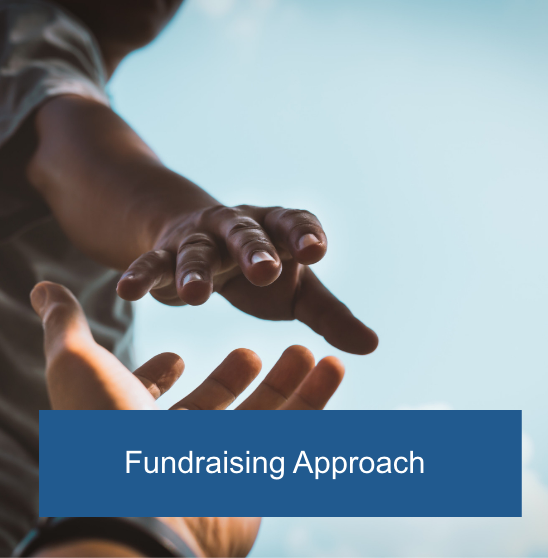Disbursement
Pillar Overview
Overview of the Disbursement Pillars
Health Response
The focus of the Health Pillar was to augment Government’s efforts to prepare the health system for the increased burden on health services as a result of the pandemic, including ensuring equipment and emergency supplies were made available.
The Pillar drove the core of disbursements, initially driving the sourcing of scarce protective wear (PPE) for frontline healthcare workers, supporting testing, enabling research to inform the response, importing ventilators and supporting the National Ventilator Project for locally manufactured non-invasive ventilators. The Health Pillar took a multi-pronged approach to support the vaccination drive, including securing the use of the COVAX facility, partnering in the Sisonke study that allowed frontline healthcare workers to get vaccinated, and supporting the provision of technical capacity to the Department of Health for the vaccine roll out. The support extended to funding vaccinating capacity to take vaccinations to the people by assisting the Department of Health to open over 300 outreach sites across the country.
Behavioural Change
The Behaviour Change Pillar was premised on the idea that government alone could not stop COVID-19 or soften its blow. Citizens, community organisations, schools, faith-based organisations, other civil society formations, government institutions, and businesses needed to act to slow the infection rate and flatten the curve. The various communications campaigns united the nation in action against COVID-19, and encouraged behaviour change in and across local communities.
The pillar aimed to inspire and mobilise South Africans to act, both individually and collectively, to flatten the curve and support those who were affected. In doing so, the Fund created a sense of unity in action.
Behaviour Change was targeted at all South Africans initially, to educate about the virus and encourage behaviour change and adoption of safety measures to avoid being infected. Later, it was aligned to the Government vaccine strategy to create demand for vaccines among the age groups and to deepen engagement in communities where vaccine uptake was low.
Humanitarian Effort
The Fund provided humanitarian support to the most vulnerable households and communities.
The socio-economic impact of the pandemic was vast. To bolster resilience, the Fund’s humanitarian response supported food security for the most vulnerable communities. The Fund also worked with various stakeholders to support interventions that addressed the escalation of gender-based violence as a consequence of the pandemic and lock down.
The Humanitarian Pillar focused on two areas – food relief and Gender Based Violence (GBV) Response. Projects were prioritized according to national requirements, each with a particular focus on rural areas, women and vulnerable communities that were likely to have felt the impact of the pandemic the most (e.g., pregnant women, unemployed youth). The implementation and community partners were selected based on access to beneficiaries that could be validated, and the ability conduct monitoring and evaluation. The Fund also partnered with Government departments working in the focus area as well as partners with credible experience and governance processes that met the Fund’s criteria.
The country was hit by other crises like the civil unrest in KwaZulu-Natal and Gauteng in July 2021 as well as severe floods in KwaZulu-Natal and Eastern Cape in April 2022. These occurred during the COVID-19 pandemic period. The impact on these regions due to the effect of multiple crises was severe so the Board agreed to establish additional pillars to support government, existing relief structures, and the private sector to provide disaster relief. The Fund had to update its mandate in the Memorandum of Incorporation and managed all funds raised for these purposes outside of the COVID-19 mandate separately. In the event where funds were transferred from the COVID-19 Fund to disaster relief pillars, the Fund reached out to specific donors to obtain agreement to redirect funds.
Humanitarian Crisis Relief Fund
– Alleviating the consequences of the July 2021 civil unrest in South Africa
The Humanitarian Crisis Relief Fund (HCRF) was established within the Fund when the Board agreed to a request from President Cyril Ramaphosa to help respond to the humanitarian and medical crisis that arose as a consequence of the civil unrest in KwaZulu-Natal and parts of Gauteng. The Solidarity Fund oversaw and ringfenced the HCRF funds, managing them separately from the COVID-19 response mandate.
Solidarity Fund Floods Response
The Flood Response was set up to respond to the humanitarian crisis resulting from devastating floods in the KwaZulu-Natal and Eastern Cape in April 2022. The Solidarity Fund supported and coordinated fundraising in support of those affected, overseeing and ringfencing all funds and managing them separately from the COVID-19 Response mandate. The funds were used to support various disaster relief projects.
Determine where the need is in context of the crisis
The Fund was organised around three focus areas chosen for their potential to reach the areas of highest need and have the greatest impact.
Typically, the overarching question the Fund would always ask itself before considering a project or initiative was – “is this the biggest possible impact we can make with the resources we have available at this particular moment?”
To allocate Funds to a specific project or initiative the Fund considered the following:
- The best available information at the time
- The proposal’s alignment to the national pandemic response
- The proposal’s ability to be implemented quickly and adapt as the situation evolved
- Optimal alignment to the resources and skills available in the Fund or the Fund’s extended network
- Where possible, the proposal’s ability to be implemented by domestic companies and empowered companies, and
- The proposal’s ability to have impact at scale.
The Fund followed a proactive approach where needs for relief were identified internally by the Board and Executives and confirmed in the market. There were also instances were implementation partners and the NDoH presented proposals to the Fund.
The Fund considered unsolicited proposals if they met the following criteria:
- Government, private sector or existing NGO’s and relief structures are not able to respond effectively.
- The proposal aligned to the Fund’s mandate.
- The proposal was structured to be implemented rapidly to create high impact at scale
Proposals aligned to the criteria were considered by technical advisory panels, brought to war room, then escalated to the Fund’s executive disbursement committee and finally the board for funding consideration as per the delegation of authority.
Assembling a multi-skilled team, supported by experts and strong governance processes is critical in a time of flux and uncertainty. As a rapid response vehicle which required decision making at speed as information and understanding changed, it was almost inevitable that some decisions would end up being less impactful than anticipated. One such instance was the supporting of the marketing of the COVID app for tracing purposes - the app was a great idea, but had very limited uptake. Fortunately, this was an exception and a vast majority of the projects funded exceeded expectations.
In its nascent stages the Fund faced criticism about appearing to exclusively procure PPE from white business to the exclusion of black business. Given the historical racial chasms in South Africa deliberate attention is needed to ensure that the windfall spend resulting from crises is not concentrated on a specific sector of society but serves as part of the nation-building necessary for an all of society response. The Fund sought to be more inclusive in its subsequent procurement and implementing processes. With respect to PPE procurement, the Fund responded by opening up opportunities that were still available in the procurement of PPE for black business. More established business does have an advantage in having a national footprint, however this can often be overcome for emerging businesses by forming partnerships and being innovative in other ways.
The Fund worked with partners that had experience in the area of focus, that had on-the-ground implementing capability, scale to reach all provinces and the capacity to effect monitoring and evaluation. These partners were initially identified through networks, then through situational analyses done by the Fund. If it became apparent that the best spread of partners was not known to largely established networks, closed or open Request for Proposals (RFP) were undertaken. In the instance of clinical operators, a staggered process was utilised, a closed RFP (1 week turnaround) was followed by an open EOI (Expression of Interest) (which lasted 2-3 months).
Buy-in from government was important to streamline the implementation process for certain projects. The Fund cultivated a good relationship with government by partnering with them in the design and development phases of those projects to co-create the best solutions. Significant challenges ensued where implementing parties did not consider the procedural requirements of government departments in rolling out implementation.
The Fund established technical advisory committees with representation from applicable sectors that provided advice on project prioritisation and evaluated the benefit and impact that could be anticipated. This process helped the Fund to disburse money in the right places at the right time in partnership with the right organisations. The committees supported exploratory conversations before project plans were formalised into fully fledged proposals to be considered at War Room, an important step to ensure appropriate buy-in from stakeholders and to focus on areas with the biggest needs.
It is important to determine the procurement strategies and asset ownership structures upfront and to incorporate this into contracts.
The Fund learnt to carefully consider specific project implications and be flexible in its resourcing strategy bringing on additional resources. Some projects required significant additional resources in both the pillar and support areas, this was the case particularly post the initial 6 months where the Fund had access to a large number of volunteers and pro-bono support. Maintaining a flexible resourcing strategy in line with the nature of projects and the stage of activities within the Fund was key to the successful operating of the Fund.
All projects were planned as rapid responses. A key lesson here was that the initial planned implementation time was often based on optimal timelines and did not adequately take into consideration various factors that in fact brought actual timelines to those that would have been achieved with more inclusive processes. Factors such as turnaround on required refinements to proposals resulting from guidance from approval processes, official requests from government where required, negotiations and alignment with partners as the detail was thrashed out during contracting, turnaround time internally and externally during the contracting phase, sometimes significantly under-estimating the potential hurdles that have to be overcome at various stages of the implementation process, resolving misunderstandings or capacity issues that become apparent during implementation and the reporting phase often meant that implementation lead times impacted overall project plans.
Initially it was expected that going to with one-stop-shop partners would reduce complexity of planning, contracting and executing, this only proved to be so in respect of managing multiple relationships, but sometimes had drawbacks in a reduced quality of monitoring and reporting and the mopping up that then followed as audit evidence was pieced together post implementation.
The context of the Fund as an institution, set up for South Africa at a time of turmoil, as well as the unfortunate truth that unscrupulous people often take advantage of crisis for their selfish interests, meant that the Fund had to be careful to account for every cent disbursed. This translated to stringent requirements for evidence which seemed to stretch many implementing partners. This was true of established as well as smaller organisations. Established players often produced the requisite evidence after protracted engagements, whilst some partners were provided with additional administrative support where there was a gap. The manner in which the external audit was run only served to underline the importance of clear evidence. It is important to explicitly communicate, as much as can be reasonably anticipated, the nature of underlying / supporting documentation that will be required, in addition to stating that implementing partners will be required to meet the reporting and audit requirements of the Fund.




